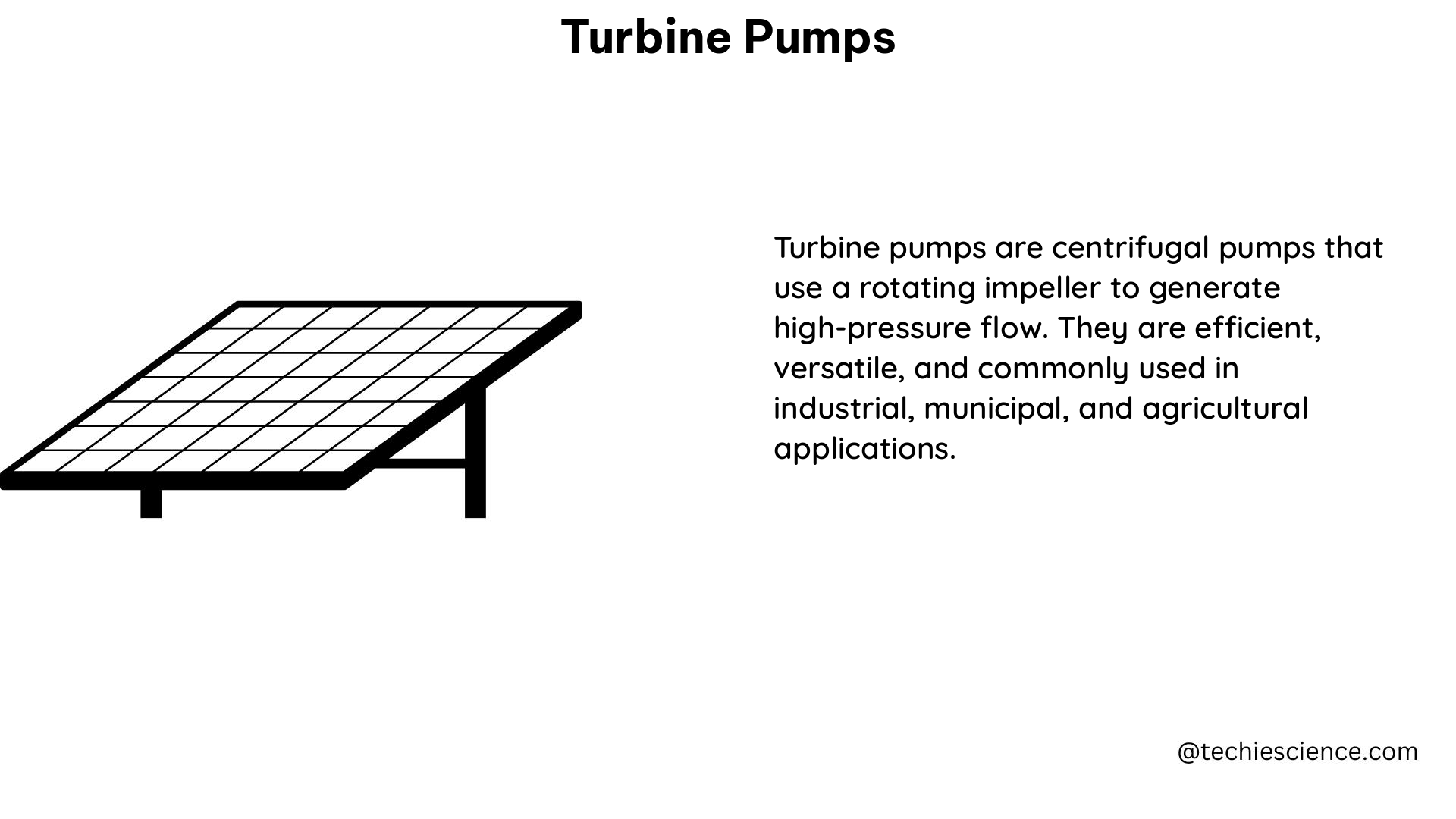Turbine pumps are a type of centrifugal pump that convert rotational kinetic energy into hydrodynamic energy through the impeller, which increases the kinetic energy of the fluid. They are commonly used in various applications, such as irrigation, water supply, and industrial processes, due to their high efficiency and versatility.
Understanding Turbine Pump Specifications
The technical specifications of turbine pumps can vary depending on the manufacturer and application. However, some measurable and quantifiable data that are commonly used to describe turbine pumps include:
Flow Rate
The volume of fluid that the pump can move per unit of time, typically measured in liters per minute (LPM) or gallons per minute (GPM). Turbine pumps can have a wide range of flow rates, from as low as 10 LPM (2.6 GPM) to as high as 10,000 LPM (2,642 GPM) or more, depending on the size and design of the pump.
Head
The height to which the pump can raise or lower the fluid, typically measured in meters or feet. Turbine pumps can have a wide range of head capabilities, from as low as 5 meters (16 feet) to as high as 300 meters (984 feet) or more, depending on the pump’s design and impeller configuration.
Power Input
The amount of power required to operate the pump, typically measured in watts or horsepower. Turbine pumps can have power inputs ranging from a few hundred watts for small, low-flow models to several hundred kilowatts for large, high-flow industrial applications.
Efficiency
The ratio of the pump’s output power (in the form of fluid flow and pressure) to its input power, typically expressed as a percentage. Turbine pumps can have efficiencies ranging from 60% to 90% or more, depending on the pump’s design, impeller configuration, and operating conditions.
Speed
The rotational speed of the pump’s impeller, typically measured in revolutions per minute (RPM). Turbine pumps can have a wide range of operating speeds, from as low as 1,800 RPM for large, low-speed models to as high as 3,600 RPM or more for smaller, high-speed models.
Inlet and Outlet Sizes
The diameter and shape of the piping that connects to the pump, typically measured in inches or millimeters. Turbine pumps can have a variety of inlet and outlet sizes, ranging from as small as 2 inches (50 mm) to as large as 24 inches (600 mm) or more, depending on the pump’s flow rate and application.
Materials of Construction
The materials used to construct the pump, such as cast iron, stainless steel, or plastic, which can affect the pump’s durability and compatibility with different fluids. Turbine pumps can be made from a wide range of materials, depending on the specific application and the properties of the fluid being pumped.
In addition to these technical specifications, it is also important to consider the pump’s operating conditions, such as the fluid temperature, viscosity, and specific gravity, as well as the installation requirements, such as the available space and access for maintenance.
Building Your Own Turbine Pump

If you’re interested in building your own turbine pump, there are several resources available online that provide detailed instructions and plans. One such resource is the website Instructables, which has a guide on how to build a small turbine pump using PVC piping, a motor, and other common materials.
The Instructables guide includes step-by-step instructions, photos, and diagrams to help you build the pump. The key steps involved in building a turbine pump using this guide include:
- Selecting and sourcing the necessary materials, such as PVC piping, a motor, bearings, and other components.
- Cutting and assembling the PVC piping to create the pump housing and impeller.
- Mounting the motor and attaching the impeller to the motor shaft.
- Aligning and balancing the impeller to ensure smooth operation.
- Connecting the inlet and outlet piping to the pump housing.
- Testing and troubleshooting the pump to ensure it is operating correctly.
Another resource for DIY turbine pumps is the website Hydrogen Fuel News, which has a guide on how to build a small hydroelectric turbine pump using a bicycle wheel, PVC piping, and other materials. This guide includes detailed instructions, photos, and videos to help you build the pump and generate electricity from flowing water.
It’s important to note that building a turbine pump requires a certain level of technical expertise and experience with tools and machinery. Therefore, it’s recommended to seek guidance from experienced professionals or organizations before attempting to build a turbine pump on your own.
Conclusion
Turbine pumps are a versatile and efficient type of centrifugal pump that are widely used in a variety of applications. By understanding the technical specifications and operating principles of turbine pumps, you can design and build your own custom pump to meet your specific needs. Whether you’re looking to irrigate your garden, supply water to your home, or generate electricity from a flowing water source, a DIY turbine pump can be a great project to tackle.
Reference:
- Instructables – DIY Turbine Pump
- Hydrogen Fuel News – How to Build a Small Hydroelectric Turbine Pump
- Keyence – Centrifugal Pump Case Study
- LinkedIn – Vertical Turbine Pump Market Share Research Report
- LinkedIn – Vertical Turbine Pumps Market Size & Efficiency 2031

The lambdageeks.com Core SME Team is a group of experienced subject matter experts from diverse scientific and technical fields including Physics, Chemistry, Technology,Electronics & Electrical Engineering, Automotive, Mechanical Engineering. Our team collaborates to create high-quality, well-researched articles on a wide range of science and technology topics for the lambdageeks.com website.
All Our Senior SME are having more than 7 Years of experience in the respective fields . They are either Working Industry Professionals or assocaited With different Universities. Refer Our Authors Page to get to know About our Core SMEs.